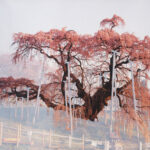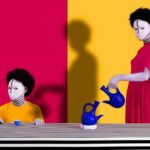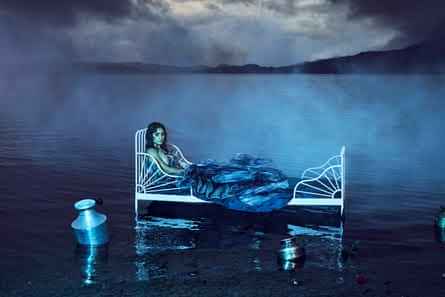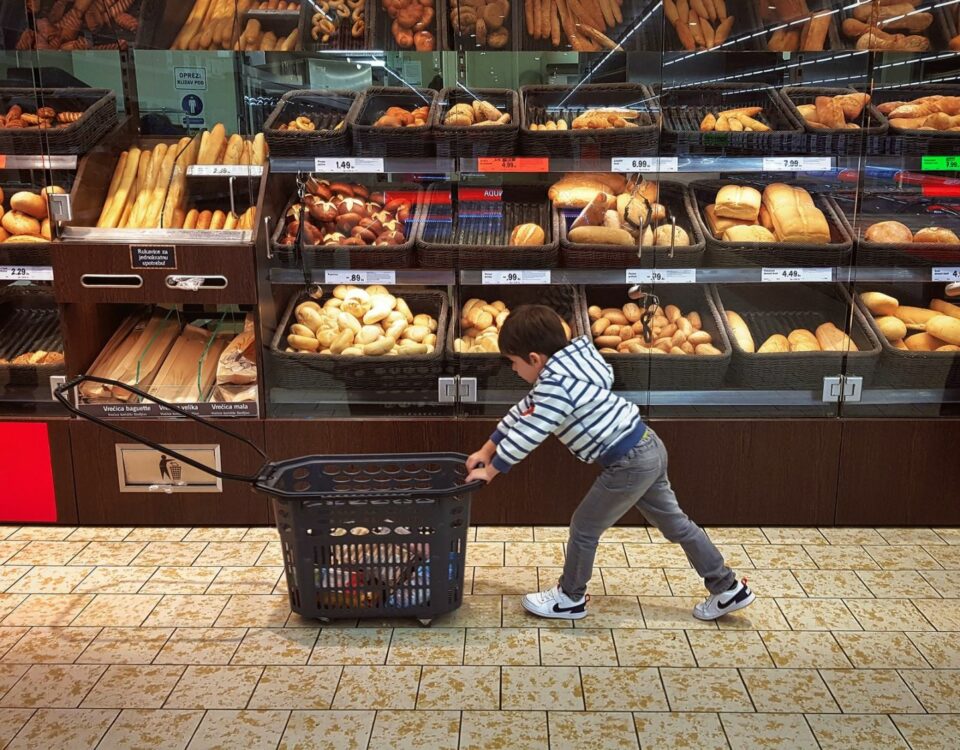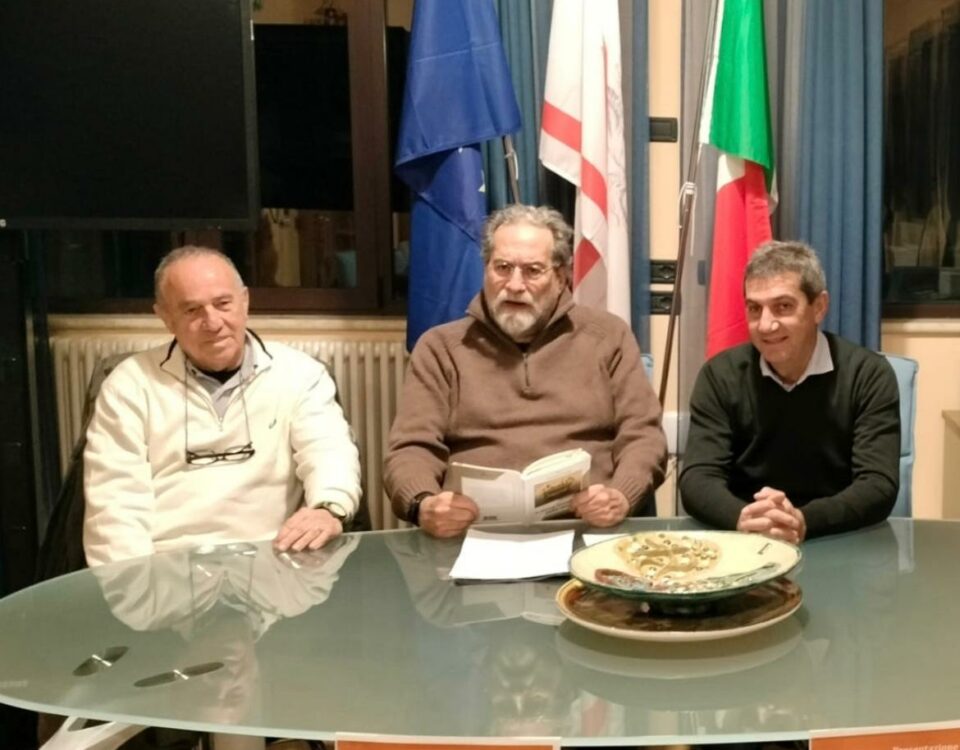‘What’s great about my age,” says Hannah Starkey, “and going through the menopause, is that you leave the male gaze behind. And it’s really liberating. You can’t really sell me anything. And I’m dangerous – because I can tell you the truth!”
A piercing, perilous honesty and a fully emancipated female gaze are characteristics that rebound in Acts of Resistance: Photography, Feminisms and The Art of Protest, a major show at South London Gallery, organised with the V&A. Crossing continents and generations, this galvanising group show seeks to join up ideas about image-making and dissent, offering a visual manifesto for a fourth wave of feminism.
Belfast-born Starkey, 53, presents a trio of prismatic, large-scale “abstract portraits”. The works belong to a wider series commissioned to commemorate the 25th anniversary of the Good Friday agreement last year. The photographs pay homage to a generation of dovish activists, women who were instrumental in Northern Ireland’s peace process. The three portraits feature Anne Carr, who was part of the Good Friday agreement team; Women’s Coalition co-founder Bronagh Hinds; and activist, actor and playwright Margaretta Ruth D’Arcy – who ran a women’s pirate radio station from her kitchen in Galway in the 1980s and was jailed in 1981 for painting protest graffiti.
Starkey grew up in Belfast during the 30-year Troubles. “I saw the power of women and their bravery in speaking out,” she says, speaking from her studio in east London. “Women had the ability to cut through the shit. I wanted to remind the young generation of how powerful women can be, with an example of what women have achieved in my own country.” It couldn’t feel more topical: Starkey mentions research showing that, when women are involved in peace negotiations, they are more likely to be successful and to endure.
The portraits were made using simple props and coloured glass. “I didn’t want to traumatise anyone with a camera,” Starkey explains. After close to three decades exclusively photographing women, she’s aware of how critical women can be of their own image. The photographs were staged to make the women visible without subjecting them to scrutiny. They are also, deliberately, not the bombastic representations we’re used to seeing in galleries and museums. “A good image speaks to everyone,” muses Starkey, whose portraits carry a sense of collective power. “It’s about what women can achieve when they get together.”
This sentiment courses through the exhibition. There are groundbreaking artist activists – the likes of Nan Goldin, Guerilla Girls, and Zanele Muholi, known for their advocacy of marginalised communities – alongside younger practitioners, such as Laia Abril, whose work is the outcome of intensive research and interviews with women who have survived abuse and abortions; and Poulomi Basu, who collaborates with women living in rural communities in India.
Among the younger artists in the show is Sethembile Msezane, who takes the idea of collaboration a step further, with live performance works. A photograph by Msezane, called Chapungu: The Day Rhodes Fell, is a celebration of the day a statue of Cecil Rhodes was removed from the University of Cape Town. This is staged at the show, providing a dramatic entry point to the exhibition. In the work, a masked female figure dressed in a black leotard, with her extended arms adorned with elaborate wings, stands in a majestic pose on a plinth, rising from a crowd who lift their phones in the air to capture the moment, while in the background, a statue is lifted by a crane.
This thrilling image documents what Msezane calls an “embodiment” – a live work that took place during the removal of the statue of the former prime minister of the Cape Colony, after months of protests in 2015. Msezane, who appears in the work, embodied a Zimbabwean bird, Chapungu, which she says came to her in a recurring dream.
“The negotiation between myself and the bird in my body was really hard to do,” the artist recalls, speaking by phone from Cape Town. “I was very scared – I wasn’t sure what I was doing or why I was there, or why I felt such a pressing need to do this work. But I knew it was the bird working through me, and I didn’t need to have all the answers. As I stepped on the plinth, my consciousness shifted away – the person in that image is not me.”
The gruelling piece lasted just under four hours. “Coming off the plinth,” she says, “I felt very tired, very thirsty, and I was shaking.” In a second image, So Long a Letter, that also appears in Acts of Resistance, Msezane embodies a mother holding a crocheted baby, made of hair. They stand beside the African Renaissance Monument in Dakar – a 171ft bronze statue that sits at the top of a hill overlooking the capital. The statue has sparked controversy since it was installed in 2010. “The big man is holding the woman and their child,” says Msezane. “But the reality in many African countries is that women are the ones who uphold society, who work and nurture. The statue doesn’t symbolise that.”
In the huge sculpture, the baby is pointing towards the west. “Are we saying the future of Africa is in the west?” says Msezane, whose narrative is very different. Her crocheted infant joins hands with the baby in the sculpture so that they instead appear to point to the ground. “The future is right here, in Africa,” she explains. “We’re the ones, as the youth, who have to create a legacy to be proud of.”
Msezane doesn’t call her work feminist: she identifies more with African knowledge systems and new animism, a spiritual practice that posits a connection between animals, plants and people. “I suppose those are the ideologies that feel more robust for me as an African woman practising and living on the continent.” However, she adds: “We don’t live in a vacuum – the issues and concerns of women are similar across the world.”
Acts of Resistance seeks to decolonise feminism and offer a more pluralistic idea of a female-led movement. It also shows photography’s value as a powerful tool of protest – fast and free to distribute, accessible anywhere, and able to reach a global audience no matter what language they speak.
Mari Katayama began taking self-portraits incorporating handsewn objects she would make as a child. She took the photographs in order to share her elaborate creations on Myspace and Mixi. Katayama now finds herself ensconced once more in her small room at home in the countryside in Gunma, Japan. There, she is working on her largest handsewn object to date. “I’m sometimes told that my work is a fantasy world or a stage made up of my own dream stories.” She sighs. “I’m fed up hearing this. Whenever I talk about feminism, I always think, ‘We have it – rights, equality and liberation – for sure.’ But then when I look at my life, I am always disappointed that this is not the case.”
Katayama, who has prosthetic legs, worked as a singer in a jazz bar as a student. One night she was heckled by a customer who shouted: “A woman who doesn’t wear high heels is not a woman.” While high heels have been a polarising symbol for feminists – the tired oppression or empowerment debate – high heels for Katayama were not even a choice. So in 2011, Katayama embarked on a mission to create a pair of high heels she could perform in – and to design the prosthetic joints that would allow her to do so comfortably.
In 2022, her vision was finally realised with the Italian luxury shoe designer Sergio Rossi. Two photographs showcase the custom-made “Mari” shoes. A film, called My Way, was recently shot at another factory – Nabtesco in Japan, where the electronically controlled prosthetic knee joints are designed and made. In the film, we see Katayama strut confidently down dim industrial corridors in her vibrant red, extreme high heels.
Acts of Resistance marks a turning point in the evolution of feminism: an approach that is more inclusive, less western-centric and still has plenty of fire in its belly. Joining up these forces to be reckoned with, the show is a space to observe and highlight the way women continue to be vulnerable and continue to fight. It is an opportunity too, Msezane reflects, “to understand where it’s going wrong, and where could it go right”.

